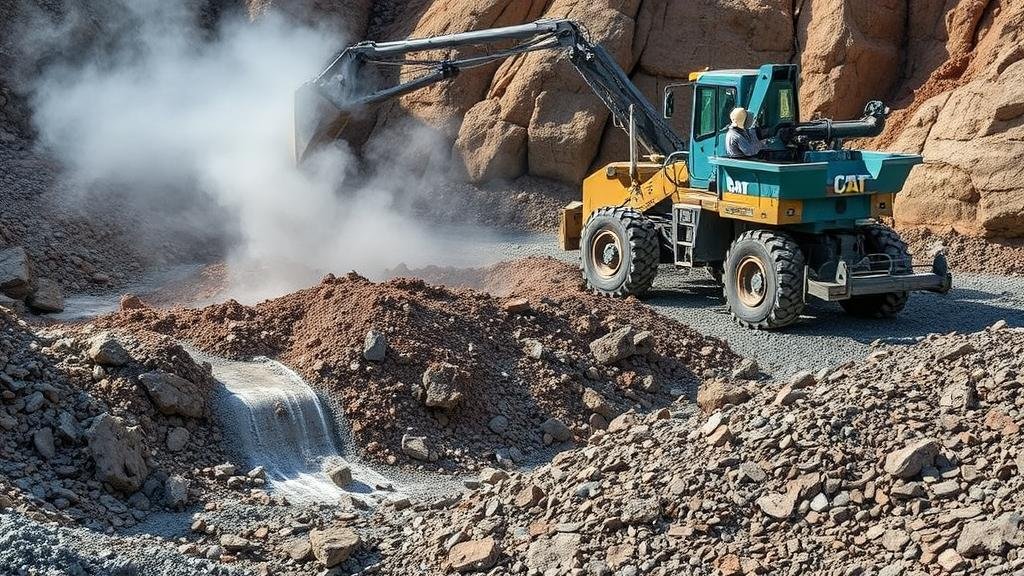Techniques for Recovering Copper from Old Mine Dumps and Tailings
Techniques for Recovering Copper from Old Mine Dumps and Tailings
Copper is one of the most important metals in modern industries, acting as a critical component in electrical wiring, plumbing, and various electronic devices. As the demand for copper continues to rise, the recovery of copper from old mine dumps and tailings has emerged as both an economic and environmental imperative. This article explores several effective techniques for recovering copper from these secondary resources, providing insights into their applications and benefits.
Understanding Mine Dumps and Tailings
Mine dumps and tailings are byproducts of mining operations. Mine dumps refer to the piles of waste rock that are removed during the ore extraction process, while tailings are the materials left over after the desired minerals have been extracted from the ore, usually consisting of fine-grained particles that can be detrimental to the environment if not properly managed.
1. Physical Separation Techniques
Physical separation techniques involve methods that utilize certain physical properties of materials to separate valuable metals from waste. They are often employed as preliminary steps to further refining processes.
- Crushing and Grinding: The first step involves crushing the ore and then grinding it to liberate the copper particles from the surrounding materials. This process increases the surface area for subsequent treatments.
- Froth Flotation: This method uses chemical reagents to create a froth that selectively binds copper minerals, allowing them to be separated from tailings. Froth flotation has shown recovery rates of up to 90% in some cases.
2. Chemical Leaching Techniques
Chemical leaching encompasses techniques that use chemical agents to dissolve copper from ore or waste material. This method is particularly suited to fine particles that are difficult to treat with physical methods.
- Sulfuric Acid Leaching: This is a widely used method where sulfuric acid is applied to oxidize copper. The resulting copper sulfate solution can then be processed through electro-winning to extract pure copper. For example, in Chile, sulfuric acid leaching has contributed to significant increases in copper recovery from historic tailings.
- Bioleaching: Utilizing certain bacteria that naturally extract metals from ores, bioleaching presents an eco-friendly alternative to chemical methods. For example, microorganisms such as Acidithiobacillus ferrooxidans can effectively solubilize copper from low-grade ores and tailings.
3. Hydrometallurgical Processes
Hydrometallurgy involves the use of aqueous solutions for metal recovery, and it is a vital method for extracting copper from complex ores or from tailings.
- Solvent Extraction and Electrowinning (SX/EW): This two-step process involves dissolving the copper in an acid solution followed by extracting the copper using a solvent. The final step, electrowinning, deposits pure copper onto electrodes. This is particularly useful in processing waste from mine dumps.
- Dump Leaching: This low-cost method involves piling ore in heaps and allowing a leaching solution to percolate through the pile, carrying copper ions along. It is often used in large-scale operations in arid regions, where evaporation can enhance leaching efficiency.
4. Environmental Considerations and Challenges
While the recovery of copper from old mine dumps and tailings presents numerous benefits, it is not without challenges. Environmental concerns include potential soil and water contamination due to leachate and the physical disturbance of ecosystems through mining activities. Proper management and adherence to environmental regulations are crucial for sustainable recovery operations.
5. Case Studies and Applications
Numerous case studies highlight the successful implementation of these techniques:
- Case Study 1: The Bingham Canyon Mine, USA: Over several decades, this mine has utilized a combination of traditional mining and modern hydrometallurgical processes to extract copper from both current mining operations and historical tailings. Innovative methods have led to recoveries exceeding 1.5 billion tons of copper.
- Case Study 2: Los Pelambres, Chile: This mine has successfully implemented sulfuric acid leaching technologies to recover copper from tailings. The operation has significantly reduced the environmental footprint by recycling waste materials effectively.
Actionable Takeaways
The recovery of copper from mine dumps and tailings not only fosters resource sustainability but also contributes to waste reduction in mining operations. Organizations and communities can pursue several strategies to enhance copper recovery:
- Invest in research to develop cost-effective and environmentally friendly leaching technologies.
- Use rigorous environmental assessments before commencing recovery operations to mitigate potential impacts.
- Encourage collaboration between mining companies, researchers, and local communities to share knowledge and resources for improved recovery operations.
To wrap up, as copper demand continues to grow, leveraging old mine dumps and tailings for recovery presents a significant opportunity. By employing innovative physical, chemical, and hydrometallurgical techniques, the mining industry can improve sustainability, lower operational costs, and reduce environmental impact.



